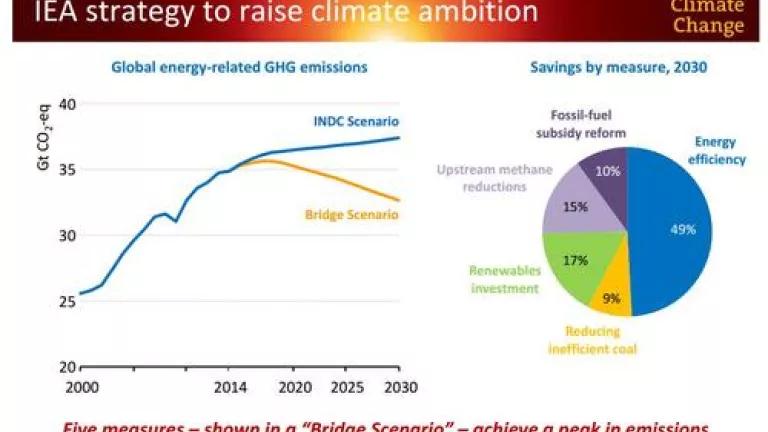
The International Energy Agency's new World Energy Outlook Special Report on Energy and Climate Change reaffirms a number of pillars for a successful climate deal at this year's UN climate talks in Paris this December. The suggested policy measures, such as phasing out fossil fuel subsidies, are increasingly considered part of the mainstream. They are adopted for economic reasons as much as for environmental ones, as policymakers better understand the economic risks from climate change. This report is another significant milestone and sign of momentum for the UN climate conference at the end of the year - it's not only countries who are committing to act through their climate pledges, but also city and state governments, and businesses around the world.
Last week, the G7 communique reaffirmed the commitment of some of the world's largest economies to reducing emissions 40 to 70 percent by 2050 and phasing out emissions by 2100. A growing number of countries and multilateral agencies are phasing out funding for coal projects, and subsidies for renewable technologies are on the rise. And given that greenhouse gases from energy production account for the majority of global emissions, this new report from IEA represents a significant shift in the energy and climate conversation, making clear that delay and inaction only increases costs down the road:
"As IEA analysis has repeatedly shown that the cost and difficulty of mitigating greenhouse-gas emissions increases every year, time is of the essence," said IEA Executive Director Maria van der Hoeven. "It is clear that the energy sector must play a critical role if efforts to reduce emissions are to succeed. While we see growing consensus among countries that it is time to act, we must ensure that the steps taken are adequate and that the commitments made are kept."
When it comes to energy, IEA identified the following pillars for action:
1. Peak in emissions - set the conditions to achieve an early peak in global energy-related emissions.
2. Five-year revision - review national climate targets regularly, to test the scope to raise ambition.
3. Lock in the vision - translate the world's climate goal into a collective long-term emissions goal.
4. Track the transition - establish a process for tracking achievements inthe energy sector.
To peak global energy-related emissions as early as 2020, the IEA report recommended that governments implement five key policy measures (see the "Bridge Scenario" in the figure). Moreover, IEA argues that only proven technologies and policies are needed, and that this one actually change regional economic and development prospects.
The five policy measures include:
- Increasing energy efficiency in the industry, buildings and transport sectors
- Reducing the use of the least-efficient coal-fired power plants and banning their construction
- Increasing investment in renewable energy technologies in the power sector from $270 billion in 2014 to $400 billion in 2030
- Gradual phasing out of fossil-fuel subsidies to end-users by 2030
- Reducing methane emissions in oil and gas production
----------
While the exact mix of policy measures taken will vary from region to region and country to country, this report makes clear that investing in smart energy policy today is the best path forward, not only to limit the amount of warming that will occur, but to limit the costs from climate change impacts in the most efficient way possible.
